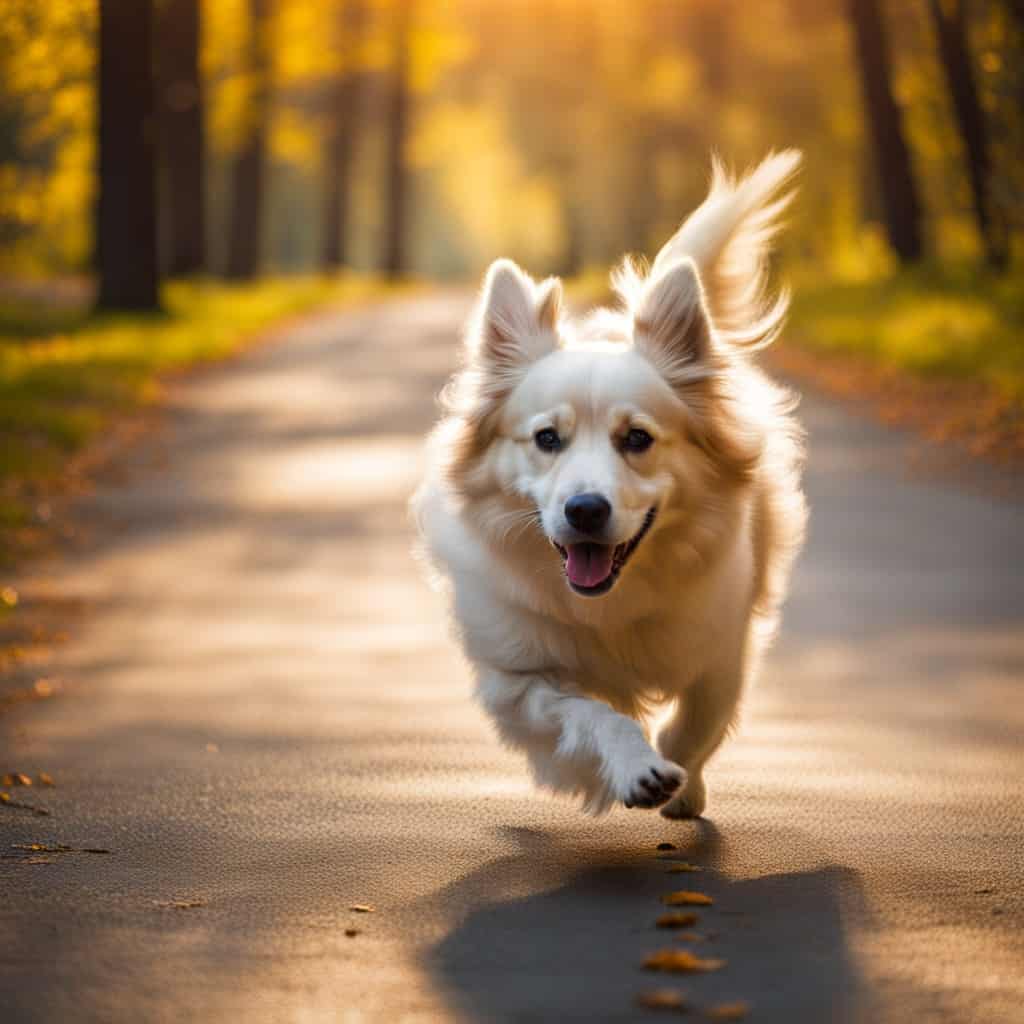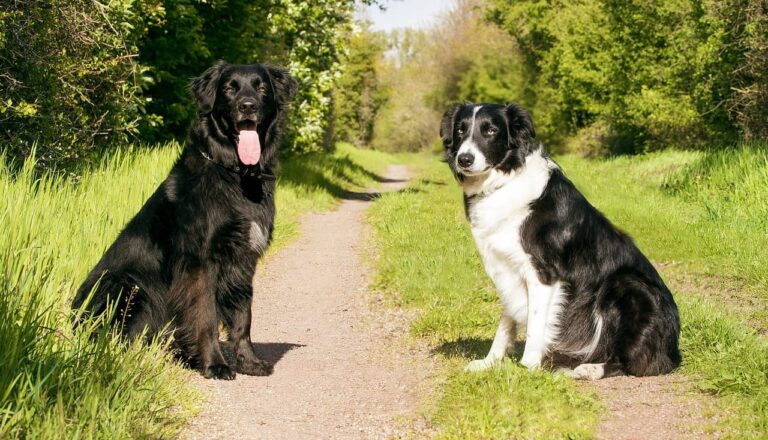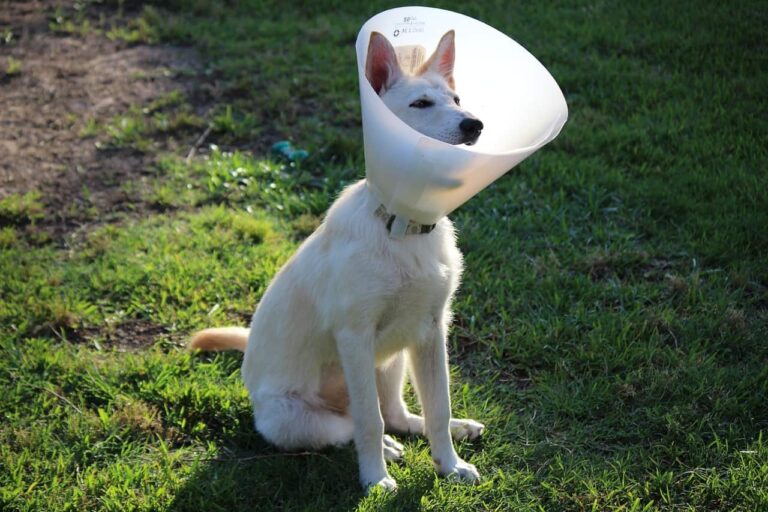Understanding Dog Twisting Body When Walking

If you’re a dog owner, you may have noticed your furry friend twisting their body while walking or running. It’s not uncommon to see dogs walk sideways or with an unusual gait, but have you ever wondered why they do this? In this blog post, we’ll explore the phenomenon of a dog twisting its body when walking and what it could mean for your dog’s body and health.
We’ll delve into the possible causes of sideways walking in dogs, from natural gaits to age-related changes. We’ll also examine the potential health implications of this behavior, such as ear infections or nerve damage.
Contents
- Exploring the Phenomenon of Dog Twisting Body When Walking
- The Role of Excitement in Unusual Movements
- Possible Causes of Sideways Walking in Dogs
- Dominant Leg Theory
- Neurological Conditions
- Musculoskeletal Issues
- Dogs’ Age
- Ear Infections
- Pins and Needles
- Treatment Options for Sideways Walking in Dogs
- Prevention and Home Care Tips
- How Should a Healthy Dog Walk?
- What are some possible medical reasons for a dog to twist their body while walking?
- Conclusion
Exploring the Phenomenon of Dog Twisting Body When Walking

Dogs twisting their bodies when walking can be a natural gait variation known as trotting. It is important to understand that trotting may indicate discomfort or a medical condition. By studying dog walking patterns, we can identify underlying causes. Unusual movements can affect coordination and gait, so attention to anybody trotting is crucial.
Dog twisting body when walking can result from various factors, such as arthritis or hip dysplasia. These conditions can lead to inflammation and pain in the dog’s body, influencing their movement.
Some breeds, like Basset Hounds, are more prone to twisting their bodies when walking. Other possible causes include vestibular disease, inner ear infections, or polyps. It is important to remember that a twisted body could be a sign of a serious condition and should not be ignored. Seeking veterinary advice can help determine the root cause and appropriate treatment options.
The Role of Excitement in Unusual Movements
Excitement can play a significant role in causing dogs to exhibit unusual movements while walking. When dogs are excited, their energy levels increase, impacting their coordination and gait. This may result in twisting of the body during walking. You may notice your dog displaying rapid steps or even jumping when they are particularly excited. Identifying these excitement-related changes in their walking patterns is important. It can help understand their behavior and well-being.
It’s worth noting that these unusual movements during excited walks are often temporary and not indicative of a serious condition. But, if your dog exhibits such movements or signs of physical pain during or after excitement, it would be advisable to consult a vet. They can assess your dog’s gait and rule out underlying issues. Such as arthritis, hip dysplasia, spinal cord problems, vestibular disease, or inner ear infections.
By being aware of the impact of excitement on a dog’s walking patterns. You can better understand their natural gait variations and ensure their comfort and well-being. Additionally, physical exercise, massage, and proper training Help manage and channel your dog’s excitement in a healthy and controlled manner, especially for breeds like the Old English Sheepdog with a natural pacing gait.
Possible Causes of Sideways Walking in Dogs
Dominant Leg Theory
The dominant leg theory suggests that dogs may walk sideways when they favor one leg over another. This can happen for various reasons, such as muscle imbalances, joint issues, or previous injuries. When a dog puts more weight on one leg while walking, it can cause an imbalance in their gait and result in a sideways movement.
Neurological Conditions
Certain neurological conditions can also lead to sideways walking in dogs. Disorders affecting the cerebellum or vestibular system, responsible for maintaining balance and coordination, can cause dogs to walk abnormally. These conditions may include cerebellar hypoplasia, vestibular disease, or brain tumors. Suppose your dog displays other symptoms related to the nervous system, such as head tremors, loss of balance, or disorientation. In that case, it is important to consult a veterinarian for further evaluation and diagnosis.
Musculoskeletal Issues
Musculoskeletal issues can also contribute to sideways walking in dogs. Conditions such as arthritis, hip dysplasia, or spinal cord problems can affect a dog’s gait and cause them to walk awkwardly or with a twisting motion. Need to to have your dog examined by a vet to determine the underlying cause and develop an appropriate treatment plan.
Dogs’ Age
As dogs age, their walking style and body movements can be impacted. Age-related changes in gait and coordination may cause them to twist their bodies while walking. This twisting can be attributed to arthritis and hip dysplasia, which are more common in older dogs. Understanding these musculoskeletal issues, such as arthritis and hip dysplasia, is crucial for diagnosing and addressing underlying problems with the ball and socket joint in the hip. Regular check-ups with a veterinarian can help monitor a dog’s walking condition and catch any potential problems early on.
Ear Infections
Ear infections can also lead to a dog twisting their body while walking. Infections in the inner ear can affect the dog’s balance and coordination, causing them to walk sideways or with a wobbly gait. It is important to look for signs of ear infection, such as head shaking, scratching at the ears, or discharge, and seek veterinary attention promptly. Treating the underlying infection can help restore your dog’s balance and prevent further complications.
Pins and Needles
Pins and needles sensation may cause dogs to twist their body when walking. Nerve issues can lead to irregular walking patterns. Dogs experiencing this sensation may show discomfort. Veterinary examination is crucial for diagnosis and treatment. Addressing pins and needles can restore normal walking function in dogs.

Treatment Options for Sideways Walking in Dogs
Once the underlying cause of your dog’s sideways walking has been identified, your veterinarian can recommend appropriate treatment options. These may include:
1. Physical Therapy: In cases where muscle imbalances or musculoskeletal issues are caused. Physical therapy can help strengthen and realign your dog’s muscles and joints. This may involve exercises, stretching, and massage techniques performed under the guidance of a professional.
2. Medications: Depending on the specific condition causing sideways walking, your vet may prescribe medications to alleviate pain or reduce inflammation in the affected area. This can help improve your dog’s mobility and reduce any discomfort they may be experiencing.
3. Surgery: In some cases, surgical intervention may be necessary to correct underlying structural issues causing your dog to twist their body while walking. Your vet will assess the situation and recommend surgery if deemed the most appropriate.
4. Lifestyle Modifications: Depending on the cause of sideways walking. Your vet may suggest making certain lifestyle modifications to accommodate your dog’s needs. This could include providing them with assistive devices like harnesses or braces. Adjusting their exercise routine, and changing their environment to minimize any potential triggers or obstacles contributing to their discomfort while walking.
Prevention and Home Care Tips
While veterinary examination and treatment are crucial for addressing sideways walking in dogs, there are also some preventative measures and home care tips that can help to prevent dog Twisting Body When Walking:
1. Regular Exercise: Engage your dog in regular, moderate exercise to help maintain muscle strength and mobility. Avoid high-impact activities that could worsen any underlying musculoskeletal issues.
2. Weight Management: Maintaining a healthy weight reduces strain on your dog’s joints and overall body. Obesity can contribute to musculoskeletal problems, so ensure your dog is on a balanced diet and monitor calorie intake.
3. Environmental Safety: Ensure your dog’s environment is safe and free of any potential hazards that could cause them to twist their body while walking. Remove clutter, secure loose rugs or carpets, and provide non-slip surfaces to prevent accidents.
4. Regular Veterinary Check-ups: Schedule routine check-ups with your vet to monitor your dog’s overall health and address any potential issues before they become more severe. Early detection and intervention can greatly improve the prognosis of your dog’s condition.
5. Assistive Devices: Talk to your vet about whether your dog would enjoy using assistive devices like harnesses or braces. These can provide more support and stability while walking, helping reduce discomfort or twisting motions.
6. Physical Therapy: Consider consulting with a veterinary physical therapist who can design a specialized exercise program for your dog. This can help improve their muscle strength, flexibility, and coordination, aiding their walking ability.
7. Pain Management: If your dog is experiencing pain or discomfort while walking, talk to your vet about appropriate pain management options. There are various medications and therapies available that can help reduce pain and improve your dog’s quality of life.
8. Gentle Exercise: Engage your dog in low-impact exercises such as swimming or walking on soft surfaces to promote muscle strength and joint flexibility. Avoid activities that involve sharp turns or excessive jumping, as they can worsen any underlying musculoskeletal issues.
9. Joint Supplements: Discuss with your vet the possibility of incorporating joint supplements into your dog’s diet. These supplements contain glucosamine and chondroitin, which can support joint health and reduce inflammation.
10. Proper Nutrition: Ensure your dog receives a balanced and nutritious diet. A healthy diet can play a significant role in maintaining joint health and reducing inflammation. Consult with your vet to determine the best diet for your furry companion.
11. Weight Management: Keeping your dog at a healthy weight can help reduce stress on their joints, reducing any twisting or discomfort while walking. Talk to your vet about appropriate part sizes and feeding guidelines to ensure your dog maintains a healthy weight.
How Should a Healthy Dog Walk?
Healthy dogs display proper body alignment and coordination while walking. Their front legs trot in sync with their back legs, indicating good physical condition. A balanced walking rhythm and correct body posture, with the opposite back and front foot moving together, are signs of a healthy dog’s legs. This can be maintained through proper nutrition, regular exercise, and timely medical attention.
Good posture in dogs is evident when they display a balanced and confident demeanor. Breeds like Basset Hounds are known for their unique “crabbing” movement, where their bodies appear twisted like a crab, especially in younger dogs and puppies. But, it’s important to note that not all twists in a dog’s body are normal, and it could be a sign of a serious condition like vestibular disease or an inner ear infection.
By ensuring that have a correct gait and posture, we can help them avoid physical pain and discomfort. This can be achieved through various methods such as massage, acupuncture, and appropriate medical treatment. Younger dogs, in particular, may experience back pain due to polyps, while older dogs may develop hind leg weakness and potential loss of function.
To sum up, dogs’ ideal movements and posture involve a straight gait, proper coordination between their front and back legs, and a balanced and confident demeanor. By maintaining their health, including nutrition, and exercise, and addressing any underlying conditions, we can help our furry friends lead comfortable and active lives.

What are some possible medical reasons for a dog to twist their body while walking?
Some possible medical reasons for a dog to twist their body while walking include spinal issues, muscle strains, or neurological conditions. It’s important to consult a veterinarian to determine the underlying cause and develop an appropriate treatment plan.
Conclusion
When Dog twisting body when walking, it can be a cause for concern. While there can be various reasons behind this behavior, such as discomfort or pain, it is important to observe your dog’s movements and consult a veterinarian if you notice any unusual or persistent twisting. By addressing the issue early on and seeking professional advice, you can ensure the health and well-being of your furry friend. Understanding your dog’s body language is key to maintaining their overall happiness and mobility.
Source:-






